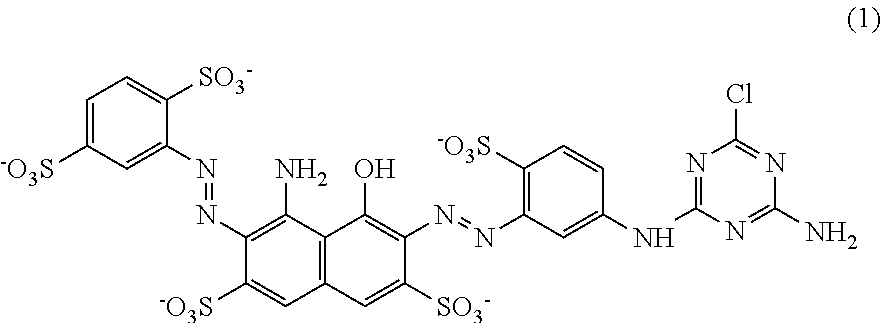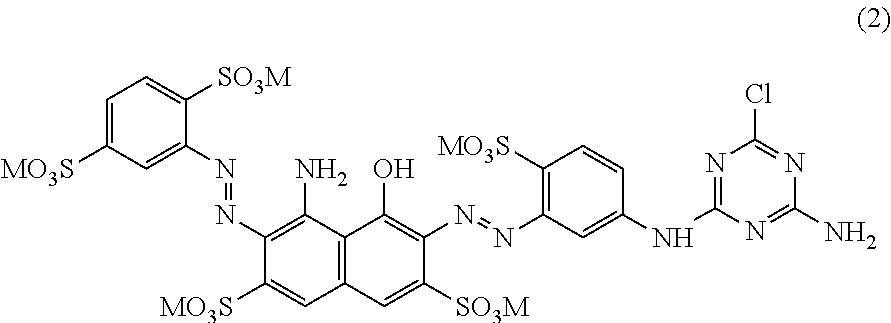Ink jet textile printing ink composition, ink set, and printing method
- Summary
- Abstract
- Description
- Claims
- Application Information
AI Technical Summary
Benefits of technology
Problems solved by technology
Method used
Image
Examples
first embodiment
2.1. First Embodiment
[0065]The ink set according to a first embodiment includes a first ink jet textile printing ink composition that is the above-described ink jet textile printing ink composition and a second ink jet textile printing ink composition that contains no Li+. The inks of an ink set consisting of Li+-free ink jet textile printing ink compositions are not sufficiently redissolved in water. Accordingly, the inks attached and fixed to a cap (suction path) clog the cap, thus reducing suction power for cleaning, and as a result, recovery from clogging may be insufficient. On the other hand, in the use of the ink set including both the first ink jet textile printing ink composition that is the above-described ink jet textile printing ink composition and the second ink jet textile printing ink composition that is a Li+-free ink jet textile printing ink composition, the first ink jet textile printing ink composition can be redissolved in water if it is fixed to the cap, and thu...
second embodiment
2.2. Second Embodiment
[0069]The ink set according to a second embodiment includes a first ink jet textile printing ink composition that is the above-described Li+-containing ink jet textile printing ink composition and a third ink jet textile printing ink composition containing a coloring material capable of controlling the hue of the first ink composition in an a* direction. The first ink jet textile printing ink composition is a black ink, but is rather bluish (a*<0). If the dye content is increased to improve the black color developability, the optical density tends to reach the upper limit thereof, or the reproductivity of the black color tend to decrease (chroma C* tends to increase). Accordingly, in printing using a composite black including, in combination, the first ink jet textile printing ink composition and the third ink jet textile printing ink composition containing a coloring material capable of adjusting the hue in an a* direction, the quality (color developability, h...
PUM
| Property | Measurement | Unit |
|---|---|---|
| Percent by mass | aaaaa | aaaaa |
| Molar density | aaaaa | aaaaa |
| Fraction | aaaaa | aaaaa |
Abstract
Description
Claims
Application Information
 Login to View More
Login to View More - R&D
- Intellectual Property
- Life Sciences
- Materials
- Tech Scout
- Unparalleled Data Quality
- Higher Quality Content
- 60% Fewer Hallucinations
Browse by: Latest US Patents, China's latest patents, Technical Efficacy Thesaurus, Application Domain, Technology Topic, Popular Technical Reports.
© 2025 PatSnap. All rights reserved.Legal|Privacy policy|Modern Slavery Act Transparency Statement|Sitemap|About US| Contact US: help@patsnap.com



